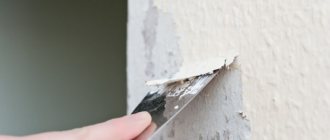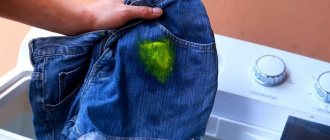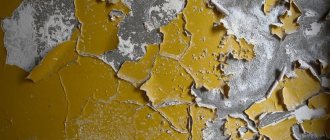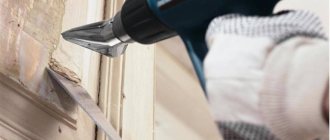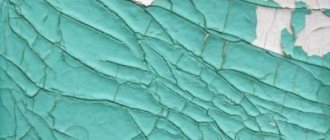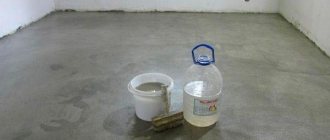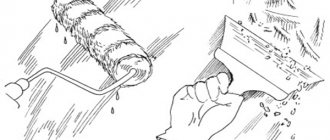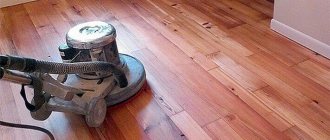One of the most popular finishing materials for many decades is paint.
With its help, doors and window frames are updated. However, rarely has anyone managed to avoid getting the product on the glass or causing unattractive streaks.
Painting yourself always carries the risk of creating difficult-to-clean stains.
The difficulty is that, unlike other common contaminants, paint is not washed off with water or soap solutions. To remove it from the surface, you will have to use one of the methods described below.
Mechanical cleaning
A reliable and affordable way to remove stains from glass surfaces.
It does not require the purchase of special chemical compounds or equipment. Using this technology, it is possible to remove both old and fresh stains. However, it is still recommended to use it only for cleaning small areas, and for larger-scale work to use any of the methods described below. Before you begin cleaning the paint, the surface needs to be prepared.
In particular, attention should be paid to degreasing. To do this, alcohol or another alcohol-containing colorless product is applied to the glass.
Then apply a soft rag soaked in boiling water or just very hot water to the stain. There should be no lint on it.
The material is fixed in such a way that it is held on the surface of the glass quite firmly. If necessary, you can even use tape. The time it takes to soften the paint in this way usually does not exceed a quarter of an hour.
It is possible to add hot water on top of an already attached rag to enhance the effect. After the specified time has passed, the rag is removed, and the paint that has become soft is scraped off with a blade or a stationery knife.
The tool must be held at an angle and used with extreme caution so as not to scratch the fragile glass surface.
Moving step by step, the stain is completely removed, after which the glass is washed to remove paint residues and other contaminants with warm soapy water.
How to remove stained glass paints from glass
How to remove paint from glass
Paint is the most common type of building material.
Working with it means stained glass during the repair process, dirt, dust, and ordinary contaminants, so it is not surprising that a natural question arises: how to clean paint from glass? Removing the consequences of such work is an activity that can require either five minutes of your time or several hours. How to avoid inconvenience? How to deal with serious stains? Learn how to remove paint from glass and challenge the odds!
How to remove paint?
Before you get started, make sure you have the necessary glass cleaning supplies. Recommended solvents and other available products are:
How to remove paint from glass?
The appropriate set of materials and the window cleaning technology itself depend entirely on the degree of contamination. Use the option below that is most convenient for you to quickly solve such an unpleasant problem.
Method 1
To remove paint stains from glass, do the following:
- First, wet them with warm water.
- Use a utility knife to carefully scrape off the paint.
- To avoid damaging the glass, pay attention to the sharpness of the knife blade - it should be sharpened to the highest possible quality.
- Scrape the paint off the glass using a sliding motion.
- The glass will get scratched if you remove the paint in different directions. Therefore, it is recommended to slide the razor in one direction, while removing the blade from the glass after each movement.
- Wet paint does not crumble, but is removed in layers.
- From time to time, free the blade from the adhering mass.
Before work, make sure that your cleaning tool is in good working order - take a small piece of glass and test the blade of a knife or razor on it. If an unpleasant scraping sound is produced by the knife, it means the blade is dull or damaged and needs to be replaced.
Method 2
To quickly clean glass from enamel, oil and other paints that contain acetone, choose a suitable solvent, such as white spirit or purified gasoline.
How to clean glass from glue, paint, scratches and other difficult contaminants
If not available, replace with acetone or kerosene. These products carefully dissolve and remove contamination. All materials for this action can be purchased at construction stores.
- Take a cotton pad.
- Soak with cleaning solution.
- Apply it to the stain - after a while the paint will soften.
- Use light movements to wipe off dirt from the glass.
- To remove solvent residue, take a damp cloth and wipe the surface of the window.
Method 3
The following option will allow you to quickly completely remove paint from glass.
In this case, a glass cleaner is used:
- Apply the substance to the window surface.
- Wait until the cleaner is absorbed.
- Wipe the surface with a damp sponge.
Method 4
This option is only used for large paint-contaminated surfaces. Large stains can be removed with high temperature. To do this, use an iron or a hair dryer:
- Take a piece of foil and apply it to the contaminated area.
- Turn on the device and direct a stream of hot air to the dirty area.
- High temperature makes the paint softer and easier to remove.
Method 5
Use a solution of ammonia - it will not only effectively remove paint from glass, but will also add shine to the surface.
- Dilute 1 tablespoon of 10% ammonia in 1 liter of water.
- Take the solution and completely wet the sponge in it.
- Wipe the glass until completely clean.
- Wash off any remaining solution from the surface of the window with water.
- Wipe with a dry cloth.
Method 6
If you are deciding how to remove paint from windows that has not yet hardened, use an effective option - a regular detergent:
- Wet the sponge with water and soapy water.
- Leave for some time so that the soap is absorbed.
- Periodically moisten the contaminated surface with the solution.
- After some time, use gentle scrubbing movements to remove dirt from the glass.
Before washing the windows to remove paint, it is recommended to cover a freshly painted window sill with plastic film so that the soap does not leave stains and streaks on the surface.
Method 7
To thoroughly clean plastic window frames, use powdered dish detergent or baking soda. It is not recommended to rub the glass itself with this composition, as the abrasive particles of the powder can scratch it.
Method 8
Use a special cleaning agent and spatula:
- Apply the product to the stain.
- Wait until it dissolves the paint.
- Once it softens, carefully remove it with a spatula.
Method 9
Remove small drops of paint using a steel ruler:
- Wet the surface with water.
- Use gentle movements to scrape off stains.
- Wipe away any remaining dirt with a soapy, damp sponge.
- Finally, wipe the surface dry.
Method 10
To remove streaks, use the abrasive side of the sponge:
- Soak it in paint-dissolving substances.
- Wipe the glass with soft, circular movements.
- Remove any remaining marks with crumpled newspapers or a dry cloth.
Thermal paint removal
The method has proven itself in working with old and tightly dried stains.
The principle of the technology is to soften the material and destroy its adhesion to the glass surface under high temperature influence. As a tool, you can use a hair dryer or an ordinary iron. A sheet of foil is attached to the glass that has been cleaned from dust and dirt and dried with tape, and then they begin to warm it up with a stream of warm steam or air.
After a few minutes of such exposure, the paint can be easily removed with a sharp blade or thin knife.
Mechanical method
The cheapest method that does not require any additional resources from the owner of the glass. The tools for its implementation are always at hand. The paint removal process does not consist of complex actions that require special skills or dexterity.
You will need:
- prepare a minimum set of tools;
- treat the surface stained with paint;
- follow directions exactly.
The downside of this method is that it takes time to implement.
Surface treatment
To remove paint stains that have stained your window opening, you must:
- treat the area of contamination with a degreasing liquid;
- moisten a piece of cloth with hot water;
- fix it on the stain;
- wait 10-15 minutes until the hot water softens the stain.
If it's cold outside, periodically add a little hot water to the fabric to keep it from freezing. To avoid holding the rag with your hands, you can secure it to the glass with tape.
What you might need
While the stain is soaking under the influence of hot water, prepare any item from the following list:
- knife;
- razor;
- metal scraper.
Liquid oil
A cotton pad is soaked with this product, which is subsequently applied and fixed on the surface of the glass for several hours.
After a specified period of time, the product is removed with turpentine or soda solution. In this way, you can also clean already dried paint brushes that were not removed from paint residues in a timely manner.
They are simply placed in a container with oil so that the stained areas are completely covered, and after the paint has softened, they are carefully washed with running water.
Solvents
The product line of solvents also includes products specifically designed for cleaning glass. An indication of the suitability of the solvent for such work should be found on the packaging.
These cleaning products are quite aggressive and have a pungent chemical odor, so when working with them, safety precautions must be observed: skin, eyes and respiratory organs must be protected with gloves, goggles and a respirator.
The room should be well ventilated with a constant flow of fresh air.
The essence of the action of absolutely any solvent is to soften the dried coloring material, after which it can be easily and simply removed from the surface. Remains of paint and solvent from the glass are washed off with soapy water.
White Spirit
Perhaps the most popular and affordable stain remover is white spirit. The cleaning agent is quite toxic, so you should use gloves and a respirator when working with it.
Contact of the composition with the skin can lead to a burn or an allergic reaction, and white spirit that gets on the fabric can damage its structure and leave permanent marks.
This composition works with glass like this:
- A cotton pad is soaked in cleaning agent and applied to the stain for 30 seconds. Usually this time is enough to separate the paint from the glass. If necessary, paint residues can be removed by re-applying white spirit or mechanically - with a knife or blade.
Methods
When painting door and window openings, it is inevitable that painting material will come into contact with glass surfaces. Moreover, stains cannot always be noticed and removed immediately, which leads to the stains drying out. One of the following methods will help to remove paint from glass, including dried pieces: chemical, mechanical, thermal.
They have their own advantages and disadvantages, for example, mechanical is used exclusively for cleaning small surfaces, but does not require the use of chemicals or solvents, therefore it is inexpensive and safe. However, this method will not help to simultaneously clean contaminated hands from paint.
Mechanical method
Using a mechanical method, you can clean glass from paint (fresh and old). It is also called manual cleaning, which is the simplest, but ineffective compared to other methods. This method works well if you start treating the contaminated surface when the first drips appear.
Removing paint mechanically
Clean paint from glass mechanically according to the following scheme:
- Take a sharp object: a blade, a well-sharpened knife or a stationery knife.
Note ! The tool must be very sharp - a blunt object can damage the glass, leaving scratches.
- Run hot water over the glass to soften dried paint and prevent scratches.
- Apply the blade of the knife to the drip at an acute angle and press the tool against the glass as much as possible along the entire plane.
- Use a back and forth motion, increasing the pressure as you scrape off the paint.
- After treating the entire dirty area, rinse the glass with warm water and detergent and rub with a clean cotton towel to remove streaks.
Minor paint stains will come off without leaving a trace. You can also remove silicone sealant from glass and polyurethane foam from windows.
Be careful! If you incorrectly calculate the pressure or use a sharp angle, you will scratch the glass.
Chemical method
It is much easier and safer to remove paint using a chemical method (for glass).
Aggressive solvents remove paint runs
The principle is based on the use of products that dissolve persistent dye (fresh or dried) and clean a large area and thickness of paint drip. If painting car accessories or windows at home was not entirely successful, use the following substances to remove excess paint:
- White Spirit;
- liquid oil;
- solvents;
- acetone.
Chemical solvents allow you to quickly clean large, stained glass, corrugated, facade, PVC frames, car headlights and frosted rough glass from acrylic, oil and water-based paints.
White Spirit
Experienced builders or people who have already encountered this problem know how to remove paint from frosted and ordinary glass - with white spirit. It is one of the most popular solvents used for cleaning windows and other surfaces after renovation.
Clean glass from paint with white spirit
Carefully! The product should not come into contact with the skin, eyes or mucous membranes, as it causes allergies and causes burns.
Use it in clothes that you “don’t mind.” Contact with clothing items leaves traces that are difficult to remove.
- Soak a piece of cotton wool or a rag in white spirit.
- Apply to the contaminated area for 1 minute.
- Rub it.
As a result of friction, the dissolved paint will be absorbed into the fabric. If there is some left on the glass, lightly scrape it with a sharp object. After treatment with white spirit, the paint structure will soften, and with careful use of a scraper it will easily come off the glass surface.
Liquid oil
Treatment with liquid oil is another way to safely remove paint from glass. However, the process takes longer compared to processing with white spirit.
- Soak a cloth in liquid oil.
- Place it on the treated area.
- Leave for about 2-3 hours.
To remove residual oil, treat the surface with turpentine or prepare a soda solution by mixing baking soda with water, and then wipe the glass.
Note ! The method is only suitable when the glass being processed is in a horizontal position.
Solvents
Hardware stores have solvents designed for treating various surfaces.
Paint remover
When purchasing this product, make sure that it can remove fresh or dried paint from glass. Solvents must be used like other chemicals, following certain rules:
- use protective gloves and respirators to protect your skin and respiratory system from harmful fumes;
- Avoid getting the product into your nose, mouth, eyes, or epidermis.
After applying the product to the treated area, the paint will dissolve and you can easily remove it mechanically. To remove solvent residues from the surface, wash the glass with water in which shavings of laundry soap have been diluted.
Acetone
Acetone helps remove even old paint. It is used in the same way as the previous products, and at the end of the work, wash the glass with soap and rub it with a clean cloth.
Carefully! Acetone can damage the plastic profile. Avoid getting the product on frames and window sills. Other, less aggressive means are used to clean and bleach yellowed frames.
Thermal method
This method is used to remove old and well-dried paint runs. Its essence is softening the structure and detaching the dye from the surface due to high temperatures.
We clean glass using the thermal method
To carry out this you need foil and a hair dryer:
- Wash the glass thoroughly with detergent.
- Wipe the surface dry.
- Tape the foil to the surface to be treated.
- Turn on the hairdryer, directing the heat to the glitter and paint.
After a few minutes, remove the foil and scrape the softened paint off the window or door glass with a sharp blade or knife.
This method is also good for removing protective film from plastic windows.
Nail polish remover and acetone
Liquids containing acetone are also suitable for cleaning glass surfaces.
The technology is completely similar to those described above - cotton wool is soaked in cleaning liquid, the stain is fixed on the surface, and after a few minutes the stain is removed with a thin knife or blade.
The glass is thoroughly washed with soapy water and wiped dry. Removing even complex and heavily dried drops and streaks of paint from glass is not difficult, even at home.
However, it is better to pay sufficient attention to preventing the appearance of such stains or try to remove the stains as quickly as possible after they appear.
Each person decides for himself which of the above methods to use, based on the characteristics of the existing contaminants.
